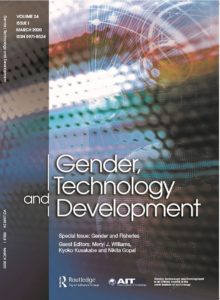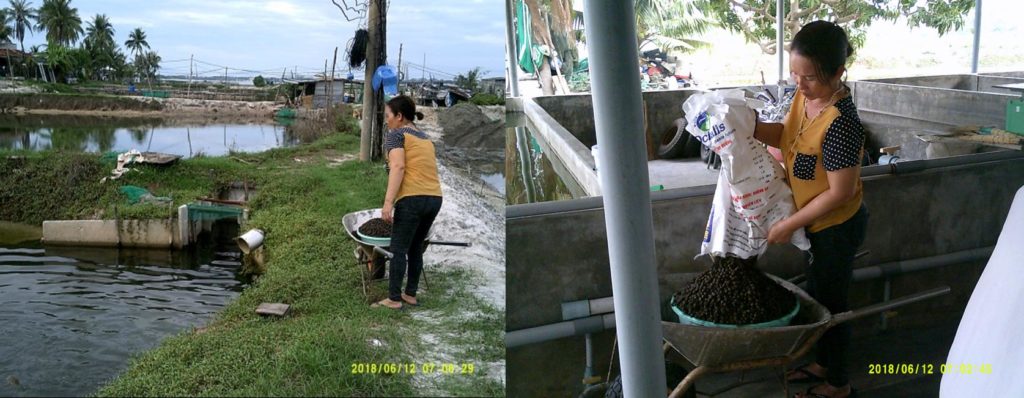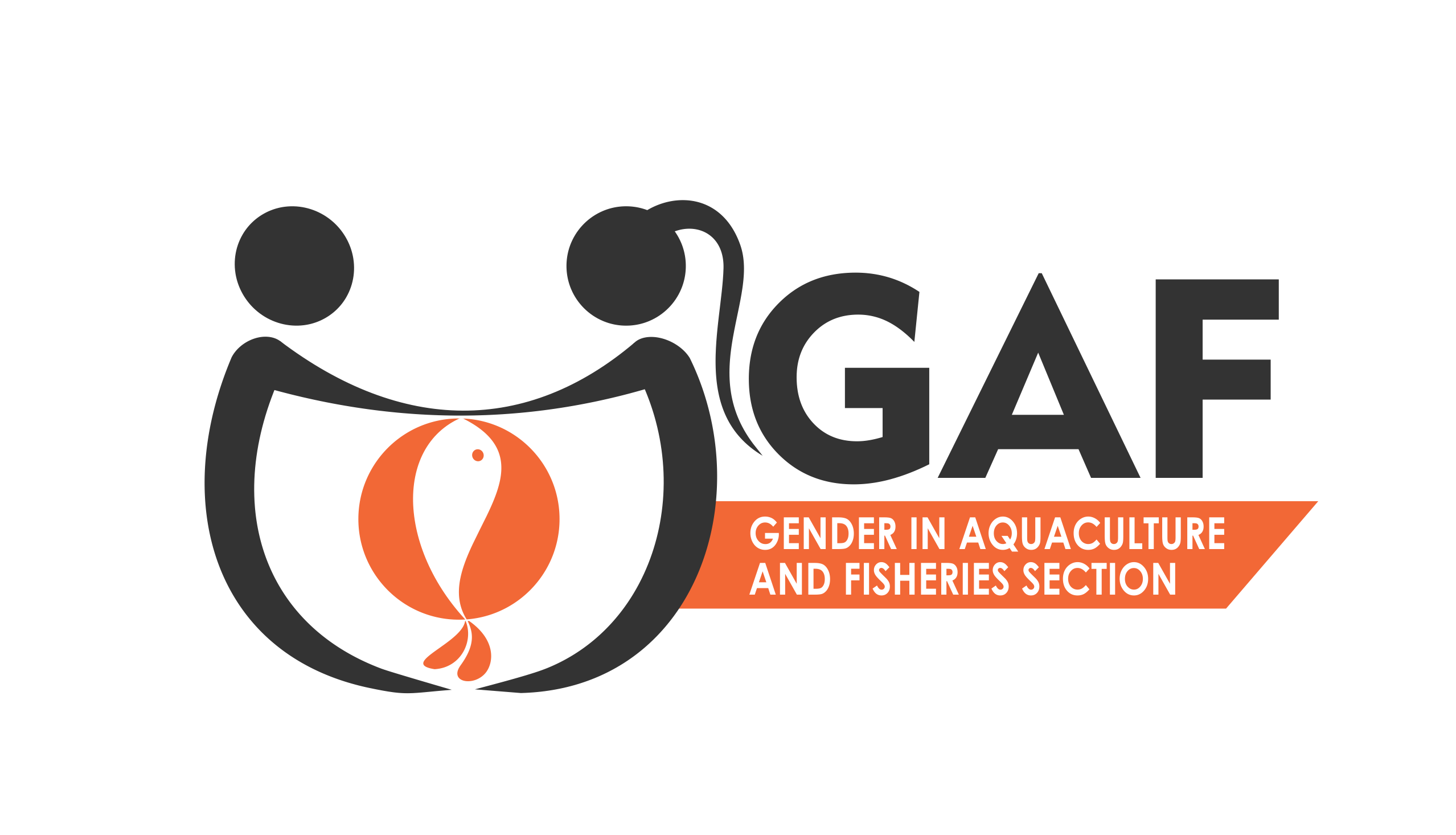
26 May 2020 | Bangkok, Thailand: Women work in all stages of the fish value chain, producing, processing and selling fish and through their work support the economy, their households, and communities in rural and coastal regions. They are said to make up half the fisheries workforce, yet their work goes unrecognized in most official statistics, policies and development programs which frequently are designed from a gender-blind standpoint.
“The new Special Issue of Gender, Technology and Development (GTD) [LINK] shows that fisheries and aquaculture are not monolithic and encompass a wide diversity with respect to regions and even within countries,” said Professor Philippe Doneys, Co-Editor-in-Chief of GTD. Co-Editor-in-Chief, Professor Kyoko Kusakabe added that “strong evidence exists, however, that when women’s work is made visible and valued, when they are able to speak up, be heard, make and influence choices, changes start to take place.”
In the GTD Special Issue on Gender and Fisheries, seven papers and the guest editorial examine these issues. The papers are largely drawn from the many presented at the 7th Global Conference on Gender in Aquaculture and Fisheries (GAF7) on ‘Expanding the Horizons of Women in Fisheries and Aquaculture’ [LINK] in 2018, co-organized by the Gender in Aquaculture and Fisheries Section of the Asian Fisheries Society, the Asian Institute of Technology and the Network of Aquaculture Centres in Asia Pacific.
The papers investigate questions about technology, innovation, organization and empowerment. In each paper, women’s and men’s roles, experiences, pressures and opportunities are examined from the perspectives of where they are located in particular fish value chains.
Seaweed farming, Philippines: In Zamboanga Peninsular, southern Philippines, Paul Ramirez and colleagues studied small scale family seaweed farming and local trading that feeds raw materials into the global seaweed market. They found that producers do not equitably benefit in the seaweed value chain even before the product is exported to valuable export markets. Women contribute their unpaid family labor to enterprises in which, compared to the profits of the other local players, the farmers gains are minimal. Better returns are stymied by lack of good planting material, adequate information and poor networking.
Seaweed farming, Zanzibar: In Zanzibar, Tanzania, seaweed farming is mainly carried out by women who face climate change impacts (higher sea temperature and salinity, disease incidence), poor farm yields, and social and cultural constraints. Cecile Brugere and colleagues found that introducing tubular nets, a new technology for culture in deeper waters, through an innovation-cum-empowerment approach brought benefits and new but surmountable challenges like needing to learn to handle boats and swimming. When innovation diffusion worked with the gender dynamics in innovation adoption, it created a compelling way forward. The new technology increased women’s self-esteem while increasing the women seaweed farmers’ social capital as the women and men created new cooperative working arrangements.
Post harvest fish processing, Zambia: Transformative changes can be combined with technology innovations, as Steven Cole and colleagues tested in the Barotse Floodplain, Zambia. They combined improved post-harvest fish processing technologies with a comparative assessment of two approaches to address gender barriers. One – the accommodative approach – recognizes barriers due to gender and works ‘around’ these barriers, while the transformative approach addresses and helps reduce gender barriers. The transformative approach led to greater gains compared to the approach that accommodated existing gender norms and power relations.
Mosquito net fishing, Mozambique: In a study in Northern Mozambique, Rebecca Short and colleagues used a gender lens and challenged the assumptions of harm posed by Mosquito Net Fishing (MNF) within the small-scale fisheries in Cabo Delgado. Here, women and men fishers deploy the net in different ways. The ‘Chicocota’ form is used by men in subtidal and intertidal zones with coral reefs and competes with other fishing gears. The women use the ‘Kutanda’ form in intertidal zones that is unlikely to have a great impact on its target species due to their high productivity and low vulnerability. The ‘Kutanda’ MN fishers, who are predominantly women, should be included in the co-management, rather than be subject to an outright exclusion, due to the micronutrient provision of their catch and its likely low ecological impact.
Flyingfish fishery, Barbados: In Barbados, Maria Pena and colleagues looked at the Central Fish Processors Association (CFPA), established in 2005 by women in the flyingfish fishery who derived a high portion of their income directly from processing, selling fish and fish supplies as well as fishing. They formed and joined the Association for better working conditions, secure rights in the fish markets, and improved market facilities. Their marketing and profits improved, as did personal and workplace hygiene, and food safety standards. The Association faced typical organizational challenges like poor participation in meetings, poor communication between the leadership and members, and not all voices within being heard equally.
Community based coastal resource management, Philippines: Sheila Dasig’s study of the experiences of women leaders in fisherfolk organizations in Bolinao, Pangasinan, Philippines showed how collectives developed for resource conservation and management have also helped some women develop their personal capabilities. Eight women leaders, each with at least ten years of leadership experience in people’s organizations for community-based coastal resource management or federation level councils, have been able to sustain and influence factors to enable them to continue holding their leadership positions over the long term. The study unravelled the women’s leadership experiences captures in the three Filipino words they use – mahirap pero masaya, which means ‘difficult but fulfilling.’
Photovoice research method: Gender and fisheries research relies on feminist research approaches. One potential method for advancing women’s empowerment through the research process is Photovoice, an innovative research method that is low cost, can have high impact and is well suited to ethical community research because it enables participants to tell their own stories through photos and accompanying dialogue. The analysis by Janine Pierce concluded that Photovoice can be a suitable research methodology for analyzing gender issues in fisheries and aquaculture. It can give women and men the voice to speak about their lives and perceptions and use this voice to reach decision makers to whom they would not normally speak, although participants should also be made aware that action is not guaranteed.

Link to Special Issue of Gender, Technology and Development on Gender and Fisheries: LINK
The Special Issue of Gender, Technology and Development is published by the Asian Institute of Technology and the Gender in Aquaculture and Fisheries Section of the Asian Fisheries Society.
This entry was posted in: Aquaculture, Barbados, Fisheries, Men, Mozambique, Philippines, Tanzania, Value Chains, Women, Zambia
